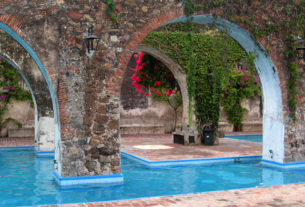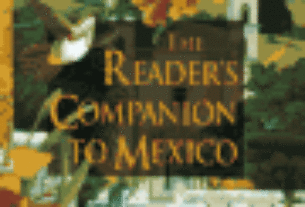There have been several versions of the Zorro story since its initial appearance in 1905 in the novel The Mark of Zorro by Johnston McCulley. My only recollection of the swashbuckling hero with the black cloak and hat and sword was decades ago when Tyrone Power was the star of a movie of the same name. I find out now that Errol Flynn was also a Zorro. And so was Antonio Banderas. There was also a TV Zorro – Guy Williams. And there have been other literary Zorros, too. When I did a search on Google.com I was offered several thousand references to the character. It’s all new to me. I wasn’t even sure if he was based on a real character but it seems he wasn’t. It seems that McCulley was influenced by reading The Scarlet Pimpernel. However, it’s not really clear to me why a novelist as renowned as Isabel Allende would produce yet another version of this oft told story.
She’s chosen to write this volume in the style of a biography. For a while I thought there might have been a real Zorro on which the novel is based. It works as a bio and there’s even a brief epilogue when the biographer reveals an identity to us.
The time period is from 1795 – when Diego de la Vega was born in California – until 1840, when he died. His father was a Spanish aristocrat – a military man and landowner. His mother was a Shoshone Indian and daughter of a tribal shaman. Diego had two big influences in his early life: his maternal grandmother, White Owl, who taught him the ways of the tribe, and his father who taught him fencing and cattle raising. As a boy he grew up with a keen awareness of the brutal injustices dealt out to the native Americans by European settlers. The resentment born of these early experiences stayed with him for the rest of his life and influenced his sense of social justice.
Another influence was his half brother, Bernardo, the son of his Indian wet nurse. As they were both reared at the same time they became extremely close friends as well as “milk brothers.” The two are hardly separated for the rest of Diego’s life. It is his closeness to Bernardo that makes him so conscious of the injustices inflicted by the Europeans on the Indians.
When he is 16 years old his father sends him to Barcelona for a European education. Spain at that time was chafing under the corruption of harsh Napoleonic rule, thus Diego finds himself on the other side of the fence – as one of the ruled rather than a ruler, so to speak. Bernardo goes with him to Spain, on the surface as his servant, but in actual fact his bosom buddy.
In Spain, Diego has a fencing teacher, a celebrated master of the sport, Manuel Escalante, who essentially wrote the book on swordplay. Escalante recruits Diego into a secret underground resistance movement, La Justicia, dedicated to helping the poor. Diego becomes an expert swordsman, too.
In Barcelona, Diego lodges in the house of Tomas de Romeu, a Frenchman and a close family friend. There he falls in love with his host’s eldest daughter, Juliana. It is unrequited love, however, because there is intense rivalry between Diego and Rafael Moneado and Juliana never makes a clear choice between them. The two men become sworn enemies. Moneado is a nasty piece of work who emerges as the villain of the story.
It is a time when Spain is under Napoleon’s control and the Spaniards are rebelling. Guerrilla fighters resist the French everywhere and Diego becomes one of them. There’s a fair amount of action and swordplay at this time. It is around this era when Diego becomes “Zorro.” The name Zorro means fox, a name he adopted after a fox saves his life in his growing up years. (You’ll have to read the book to find out how that happens). White Owl tells him at the time that “Zorro is your totemic animal, your spiritual guide. Cultivate its skill, cleverness and intelligence.”
After a few years in Spain the time comes when the French are forced to get out of the country. As the de Romeu family are French, it becomes necessary to get Juliana and her sister out of the country and Zorro takes it on himself to smuggle them to California. On the journey back they encounter high seas storms and pirates and a further string of adventures. Also, Rafael Moneado, Juliana’s other “suitor” accompanies them.
In California, Zorro continues his swashbuckling ways, taking on the forces of evil – slave traders and persecutors of the natives wherever he finds them. Also there’s the inevitable sword fight between Moneado and Diego.
I think that’s enough plot for the moment. If all of this action and activity and buckleswashing sounds interesting to you, you’ll probably enjoy this one. When I take a look on Amazon.com, I see that a lot of readers and professional reviewers rate it very highly, although I’m not entirely alone with my views. Personally I found it rather hard going – slow to get started and not terribly engrossing once it did. There are some interesting passages. Allende has done her research well on the historic period. I found her account of the two long sea voyages very interesting – from California to Spain and back, years later. But Zorro himself never seems to come to life as a real human character. He’s just a bit too perfect for that. That’s a surprise for a book that comes from someone with Isabel Allende’s track record. I’ve loved reading her previous books. I frankly never found this an easy book to pick up and spend time with. Only my duty to you, dear readers, made me even finish it. This is the one-hundredth book review I’ve written for Mexico Connect, and it was the most difficult one of all to do. So. . .
Zorro, A Novel
By Isabel Allende
HarperCollins: 2005
Available from Amazon Books: Hardcover


